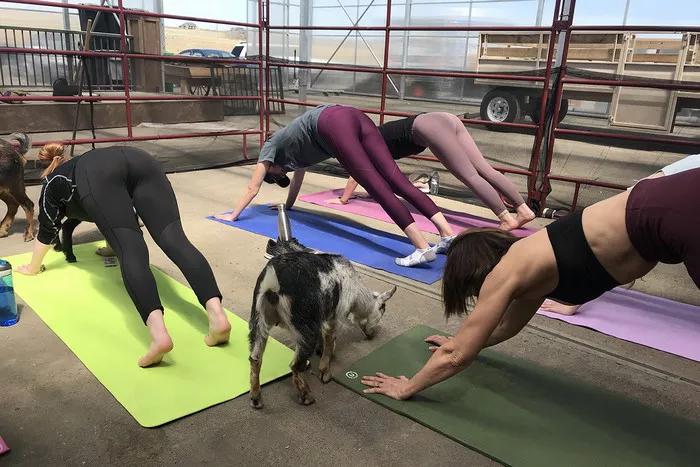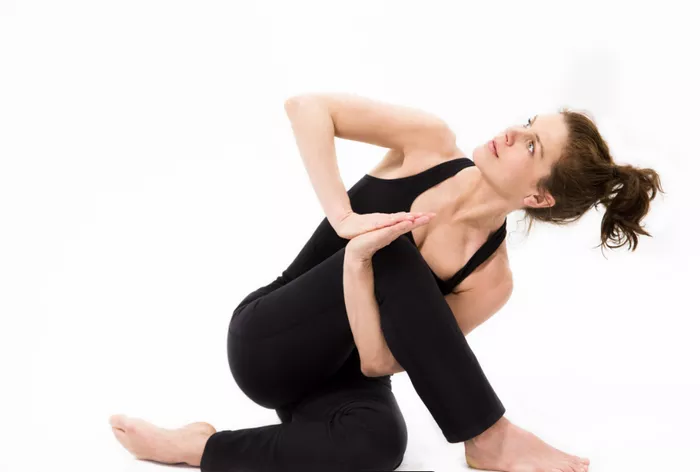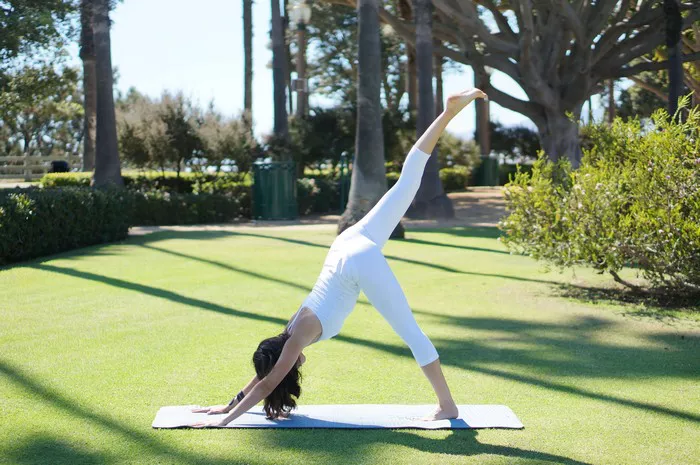Yoga, as a practice, has been gaining immense popularity across the globe, and with it, various styles and schools of yoga have developed, each with its unique approach and philosophy. One such distinguished style is Sivananda Yoga. Rooted in the teachings of Swami Sivananda, this form of yoga is recognized for its emphasis on holistic well-being and spiritual growth. But what sets Sivananda Yoga apart from other styles? In this article, we will explore the distinct aspects of Sivananda Yoga and examine how it stands out as a comprehensive system for physical, mental, and spiritual development.
The Roots of Sivananda Yoga
Sivananda Yoga is based on the teachings of Swami Sivananda, a prominent spiritual teacher and yogi of the 20th century. He was born in 1887 in India and became one of the most revered figures in the world of yoga and Vedanta. His approach to yoga was not just about mastering postures (asanas) but about achieving a state of balance and harmony through the practice of physical postures, breathing techniques, meditation, and a life of ethical conduct.
The essence of Sivananda Yoga lies in its holistic nature. It blends traditional yoga practices with modern concepts of health and well-being, focusing on the development of the body, the mind, and the spirit. This balance is achieved by combining Hatha Yoga (the physical aspect of yoga) with Raja Yoga (the meditative aspect) and Bhakti Yoga (the path of devotion).
The Key Principles of Sivananda Yoga
To understand how Sivananda Yoga is different from other forms of yoga, we need to explore the core principles that guide this practice. These principles serve as the foundation for Sivananda Yoga and help practitioners develop both inner peace and physical strength.
1. The Five Points of Yoga
Swami Sivananda outlined the Five Points of Yoga, which serve as a guiding framework for the practice. These points are:
Proper Exercise (Asanas): Sivananda Yoga incorporates a series of physical postures (asanas) designed to stretch and strengthen the body. These asanas are intended to help practitioners maintain physical health, flexibility, and strength while also preparing the body for meditation. The asanas are practiced in a slow, controlled manner, focusing on alignment, breath, and awareness. Unlike some other styles of yoga that may emphasize faster, more intense sequences, Sivananda Yoga encourages steady, mindful movement.
Proper Breathing (Pranayama): Pranayama, the practice of controlled breathing, plays a crucial role in Sivananda Yoga. It helps regulate the flow of prana (life force energy) within the body and mind. Through techniques like Alternate Nostril Breathing (Nadi Shodhana) and Kapalbhati (a form of breath retention), practitioners learn to balance their energy and improve concentration, mental clarity, and vitality. Pranayama also helps calm the mind, reduce stress, and prepare the practitioner for deeper meditation.
Proper Relaxation (Savasana): Sivananda Yoga places a strong emphasis on relaxation. The practice of Savasana (Corpse Pose) is an essential part of every session. After completing the physical postures, practitioners lie in Savasana to allow the body to absorb the benefits of the practice. This relaxation phase also serves as a time for mental stillness, fostering a sense of peace and tranquility.
Proper Diet (Vegetarianism): A vegetarian diet is recommended in Sivananda Yoga, as it is believed to promote clarity of mind, health, and compassion. Swami Sivananda encouraged a sattvic diet—one that is pure, light, and nourishing—believing that the food we consume has a direct impact on our thoughts and emotions. A vegetarian diet aligns with the yogic principle of ahimsa (non-violence), as it reduces harm to living beings and supports spiritual growth.
Positive Thinking and Meditation: Sivananda Yoga encourages the cultivation of positive thoughts and attitudes. Meditation, particularly the practice of Mantra Meditation, is central to this approach. By repeating a mantra (a sacred sound or phrase), practitioners can calm the mind, increase concentration, and connect with their higher selves. Meditation also helps in cultivating a positive mindset, improving emotional resilience, and fostering spiritual growth.
2. Integration of Hatha, Bhakti, and Raja Yoga
What makes Sivananda Yoga particularly distinctive is its integration of various branches of yoga. While many styles of yoga focus on one particular path—be it physical postures (Hatha Yoga), devotion (Bhakti Yoga), or meditation (Raja Yoga)—Sivananda Yoga encompasses all of these elements.
Hatha Yoga: The physical practice in Sivananda Yoga is rooted in Hatha Yoga, which emphasizes the development of strength, flexibility, and balance. In Sivananda Yoga, the asanas are practiced in a slow, deliberate manner to enhance the connection between body and mind. A typical Sivananda Yoga class will include a series of postures like the Sun Salutation (Surya Namaskar), Tree Pose (Vrksasana), and Cobra Pose (Bhujangasana), among others.
Bhakti Yoga: This path focuses on devotion and surrender to the Divine. In Sivananda Yoga, Bhakti is cultivated through the chanting of mantras and prayer. The practice of Kirtan (devotional chanting) is often included in classes, fostering an atmosphere of devotion and spiritual connection. Bhakti Yoga encourages practitioners to see divinity in all beings and to offer their actions, thoughts, and words in service of the greater good.
Raja Yoga: Raja Yoga is the path of meditation and self-discipline. Sivananda Yoga incorporates meditation as a key practice for calming the mind and enhancing self-awareness. Techniques such as Trataka (concentration on a single point or flame), Dhyana (meditation), and Pratyahara (withdrawal of the senses) are used to cultivate inner peace and mental clarity. Raja Yoga is often seen as the “royal path” to self-realization, as it involves the mastery of the mind and the cultivation of deep concentration.
By combining these three branches of yoga, Sivananda Yoga offers a well-rounded approach to personal development, balancing the physical, mental, and spiritual aspects of life.
The Structure of a Typical Sivananda Yoga Class
A typical Sivananda Yoga class is structured in a way that allows practitioners to experience the full spectrum of yoga practice. The flow of the class is designed to gradually warm up the body, improve flexibility, build strength, and cultivate a peaceful mind.
Opening Chant and Prayers: The class usually begins with a brief chant or prayer to invoke the blessings of the Divine. The most common chant is the Om Namah Shivaya, a mantra of reverence and surrender. This chant helps set the tone for the class, aligning the practitioner with a sense of peace and spiritual connection.
Warm-Up and Asanas: The class then progresses into a series of asanas (postures). These asanas are typically practiced in a systematic sequence to stretch, strengthen, and balance the body. The sequence includes poses for the spine, legs, shoulders, and core, and often concludes with a few relaxation poses.
Pranayama: After the physical postures, pranayama (breathing exercises) is incorporated to energize and calm the body and mind. Breathing techniques such as Nadi Shodhana and Kapalbhati are often practiced to cleanse the energy channels and improve mental clarity.
Relaxation (Savasana): Following pranayama, practitioners are guided into Savasana (Corpse Pose), where they lie down in a relaxed state, allowing the body to absorb the benefits of the practice. This period of relaxation helps in deepening the connection with the breath and calming the mind.
Meditation or Chanting: The class may conclude with a session of meditation or chanting. Mantras are repeated to elevate the practitioner’s consciousness and promote inner stillness. Sometimes, Kirtan (devotional singing) is included, creating a community atmosphere of shared devotion and connection.
The Benefits of Sivananda Yoga
Sivananda Yoga offers a wide range of benefits for physical, mental, and spiritual health. Some of the key benefits include:
Improved Physical Health: The practice of asanas in Sivananda Yoga helps increase strength, flexibility, and balance. Regular practice improves posture, reduces the risk of injury, and supports overall physical health. The gentle and mindful approach to movement also makes it suitable for practitioners of all levels, from beginners to advanced students.
Mental Clarity and Stress Reduction: The combination of breathwork, physical movement, and meditation in Sivananda Yoga helps calm the mind, reduce stress, and increase mental clarity. The regular practice of pranayama and meditation encourages emotional balance, helping practitioners manage anxiety, depression, and other mental health challenges.
Spiritual Growth: The holistic approach of Sivananda Yoga, which incorporates devotion, self-discipline, and meditation, fosters spiritual growth. By practicing mantra chanting and meditation, practitioners develop a deeper connection to their inner selves and the Divine. The teachings of Swami Sivananda encourage a life of service, selflessness, and compassion, which leads to greater spiritual fulfillment.
Balance and Harmony: Perhaps the most significant benefit of Sivananda Yoga is the balance it cultivates between the body, mind, and spirit. The Five Points of Yoga provide a comprehensive framework for leading a harmonious and healthy life. By following these principles, practitioners can experience greater peace, vitality, and joy.
Conclusion
Sivananda Yoga stands out as a comprehensive and holistic approach to yoga practice. With its emphasis on physical health, mental well-being, and spiritual growth, it offers a balanced path that integrates various branches of yoga—Hatha, Bhakti, and Raja. Through its Five Points of Yoga, Sivananda Yoga encourages practitioners to lead a life of mindfulness, devotion, and self-discipline. Whether you are a beginner or an experienced yogi, Sivananda Yoga offers tools and techniques to foster personal growth, inner peace, and spiritual awakening. If you are seeking a yoga practice that goes beyond just the physical postures, Sivananda Yoga provides a well-rounded path to a healthier, more balanced, and fulfilling life.
Related topics


























